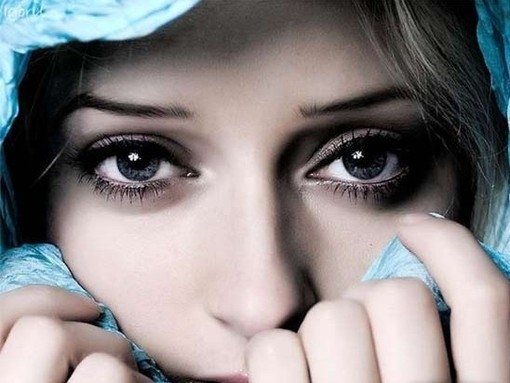Aging is not for the squeamish: skin sags, joints ache and hearing might start to go. And many seniors have trouble sleeping, which can lead to other health problems. Now research shows that a subtle consequence of aging may be responsible for the insomnia: the eye's lenses turn yellow.
衰老是不挑人的:皮膚松弛,關節疼痛,聽力下降。許多老年人還出現了睡眠問題,這些睡眠問題能導致其他健康問題。現有研究表明,一個細微的衰老后果可能是導致失眠的罪魁禍首——眼球的晶狀體變黃。
 The yellowing can take decades, like a page slowly turning color in an old book. But what does this color change have to do with sleep? The yellowed lens allows less blue light into the retina. And those wavelengths of light play a key role in regulating our circadian rhythm and sleep schedule.
The yellowing can take decades, like a page slowly turning color in an old book. But what does this color change have to do with sleep? The yellowed lens allows less blue light into the retina. And those wavelengths of light play a key role in regulating our circadian rhythm and sleep schedule.
變黃的過程會持續幾十年,就像是一本舊書的書頁慢慢地泛黃。但這種顏色的變化與睡眠有什么關系呢?變黃的晶狀體很難將藍色光波帶入視網膜,而那些光的波長在調節我們的晝夜節律和睡眠規律中起著至關重要的作用。
The new study looked at 970 older adults, and found that those with the yellowest lenses also tended to report the most sleep disturbances. The findings are in the journal Sleep.
這項新的研究對970名老年人進行了觀察,發現那些眼球晶狀體最黃的老年人也正是報告說受到睡眠困擾最為嚴重的人群。這些研究結果發表在《睡眠》期刊上。
Cataract surgery replaces the aging lens with an artificial one, which can let in broader ranges of light—and has been reported to improved sleep. It may be counterintuitive, but getting better shuteye in the golden years might mean letting more light in.
白內障手術用人工晶狀體替代老化的晶狀體,可以讓更多的光波射入眼球,已有報道表明可以改善睡眠。這樣做也許有悖常理,但若能在退休后的美好時光里可以獲得更優質的睡眠,或許正意味著應該讓更多的光照射進來。
來源:可可英語 http://www.ccdyzl.cn/hangye/201202/172265.shtml The yellowing can take decades, like a page slowly turning color in an old book. But what does this color change have to do with sleep? The yellowed lens allows less blue light into the retina. And those wavelengths of light play a key role in regulating our circadian rhythm and sleep schedule.
The yellowing can take decades, like a page slowly turning color in an old book. But what does this color change have to do with sleep? The yellowed lens allows less blue light into the retina. And those wavelengths of light play a key role in regulating our circadian rhythm and sleep schedule.










